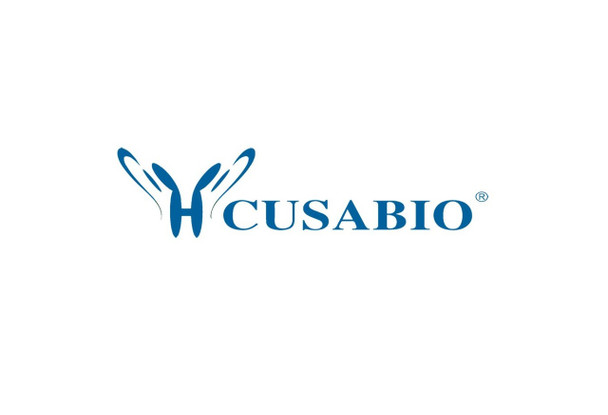Cusabio Human Recombinants
Recombinant Human Prosaposin (PSAP), partial | CSB-YP018836HU
- SKU:
- CSB-YP018836HU
- Availability:
- 25 - 35 Working Days
Description
Recombinant Human Prosaposin (PSAP), partial | CSB-YP018836HU | Cusabio
Alternative Name(s): Proactivator polypeptide
Gene Names: PSAP
Research Areas: Signal Transduction
Organism: Homo sapiens (Human)
AA Sequence: SDVYCEVCEFLVKEVTKLIDNNKTEKEILDAFDKMCSKLPKSLSEECQEVVDTYGSSILSILLEEVSPELVCSMLHLCSGT
Source: Yeast
Tag Info: N-terminal 6xHis-tagged
Expression Region: 311-391aa
Sequence Info: Partial
MW: 11.1 kDa
Purity: Greater than 90% as determined by SDS-PAGE.
Relevance: Saposin-A and saposin-C stimulate the hydrolysis of glucosylceramide by beta-glucosylceramidase and galactosylceramide by beta-galactosylceramidase. Saposin-C apparently acts by combining with the enzyme and acidic lipid to form an activated complex, rather than by solubilizing the substrate. Saposin-B stimulates the hydrolysis of galacto-cerebroside sulfate by arylsulfatase A, GM1 gangliosides by beta-galactosidase and globotriaosylceramide by alpha-galactosidase A. Saposin-B forms a solubilizing complex with the substrates of the sphingolipid hydrolases. Saposin-D is a specific sphingomyelin phosphodiesterase activator. Prosaposin: Behaves as a myelinotrophic and neurotrophic factor, these effects are mediated by its G-protein-coupled receptors, GPR37 and GPR37L1, undergoing ligand-mediated internalization followed by ERK phosphorylation signaling. Saposins are specific low-molecular mass non-enzymic proteins, they participate in the lysosomal degradation of sphingolipids, which takes place by the sequential action of specific hydrolases.
Reference: "Structure of full-length cDNA coding for sulfatide activator, a Co-beta-glucosidase and two other homologous proteins: two alternate forms of the sulfatide activator." Nakano T., Sandhoff K., Stuemper J., Christomanou H., Suzuki K. J. Biochem. 105:152-154(1989)
Storage: The shelf life is related to many factors, storage state, buffer ingredients, storage temperature and the stability of the protein itself. Generally, the shelf life of liquid form is 6 months at -20?/-80?. The shelf life of lyophilized form is 12 months at -20?/-80?.
Notes: Repeated freezing and thawing is not recommended. Store working aliquots at 4? for up to one week.
Function: Saposin-A and saposin-C stimulate the hydrolysis of glucosylceramide by beta-glucosylceramidase (EC 3.2.1.45) and galactosylceramide by beta-galactosylceramidase (EC 3.2.1.46). Saposin-C apparently acts by combining with the enzyme and acidic lipid to form an activated complex, rather than by solubilizing the substrate.; FUNCTION
Involvement in disease: Combined saposin deficiency (CSAPD); Leukodystrophy metachromatic due to saposin-B deficiency (MLD-SAPB); Gaucher disease, atypical, due to saposin C deficiency (AGD); Krabbe disease, atypical, due to saposin A deficiency (AKRD)
Subcellular Location: Lysosome, SUBCELLULAR LOCATION: Prosaposin: Secreted
Protein Families:
Tissue Specificity:
Paythway:
Form: Liquid or Lyophilized powder
Buffer: If the delivery form is liquid, the default storage buffer is Tris/PBS-based buffer, 5%-50% glycerol. If the delivery form is lyophilized powder, the buffer before lyophilization is Tris/PBS-based buffer, 6% Trehalose, pH 8.0.
Reconstitution: We recommend that this vial be briefly centrifuged prior to opening to bring the contents to the bottom. Please reconstitute protein in deionized sterile water to a concentration of 0.1-1.0 mg/mL.We recommend to add 5-50% of glycerol (final concentration) and aliquot for long-term storage at -20?/-80?. Our default final concentration of glycerol is 50%. Customers could use it as reference.
Uniprot ID: P07602
HGNC Database Link: HGNC
UniGene Database Link: UniGene
KEGG Database Link: KEGG
STRING Database Link: STRING
OMIM Database Link: OMIM









